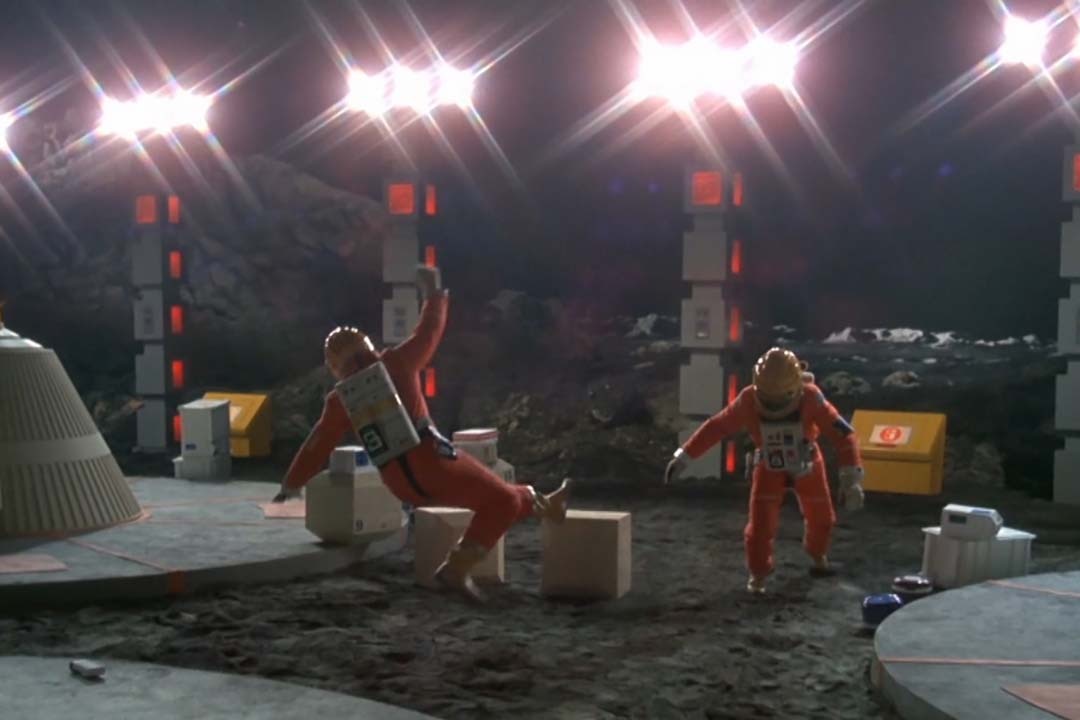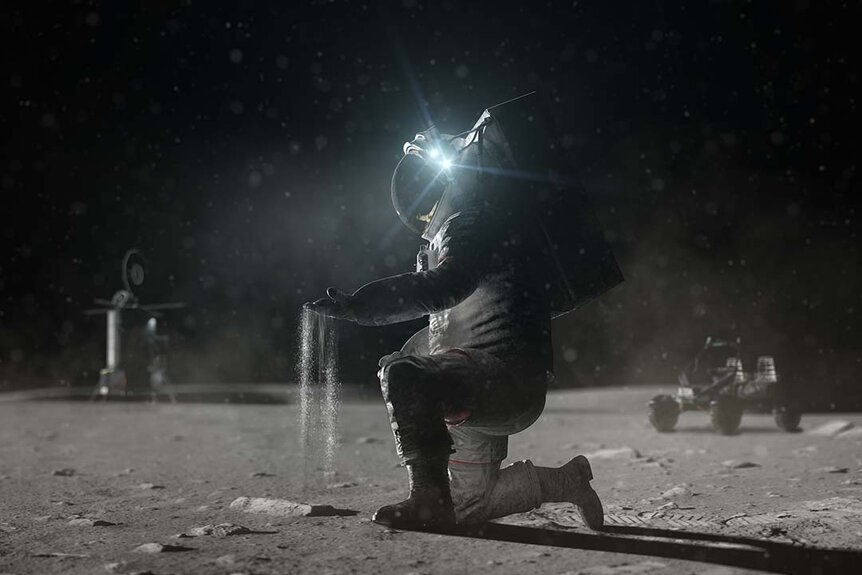Create a free profile to get unlimited access to exclusive videos, sweepstakes, and more!
Climate engineers propose blocking the Sun by blasting Moon dust at it
It's like a 2% eclipse, all of the time.

In the years immediately following the success of the Apollo program, humanity was engaged in the business of reimagining its relationship with the Moon. What had, for centuries, been an untouchable world hovering in the sky, was suddenly a place for exploration filled with looming potential. In Space: 1999, (now streaming on Peacock!) we dreamed of a future in which hundreds of scientists and explorers continuously inhabit a lunar research station called Moonbase Alpha.
In addition to the research taking place at the station, humanity has taken to disposing of its nuclear waste on the far side of the Moon, where it can’t do any harm. At least, that was the assumption. When a mysterious wave of magnetic radiation strikes the site, the nuclear waste explodes with enough force to knock the Moon out of orbit. The blast accelerates the Moon with such force, in fact, that it rockets straight away from the Earth and out of the solar system. As a result, the inhabitants of Moonbase Alpha are severed from the Earth and forced to contend with the bizarre reality of deep space. Needless to say, their plan to use the Moon for humanity’s benefit didn’t go exactly to plan.
RELATED: A lunar base could be made of bricks 3D printed from lunar dust
At the risk of laughing in the face of that cautionary tale, scientists from the University of Utah and Cambridge have proposed a real-world way for humanity to use the Moon, not for nuclear waste disposal but to forestall some of the effects of climate change. Their recent study, published in the journal PLOS One, outlines a proposal to block out roughly 2% of the Sun’s light with a space-based sun-shield made of Moon dust.
This isn’t the first time scientists and engineers have proposed using some sort of material to block sunlight and reduce average global temperatures. Researchers from Harvard University, for instance, have proposed spraying calcium carbonate, a non-toxic material, into the atmosphere. Those particles would float around in an air column and reflect light back out into space, cooling the planet. Other proposals work on a similar principle but rely on different particulates like sulfur dioxide. While these ideas are gaining support, there are some considerable concerns.
Releasing additional particulates into the atmosphere could cause unforeseen chemical reactions and downstream effects, not to mention the raw increase in pollution. There is an understandable level of hesitation about moving ahead until we understand all of the potential consequences. The new proposal sidesteps this problem by placing the sun-shading dust not into the air, but in orbit above it, an idea that presents its own challenges.
Lifting dust from the Earth and into orbit presents a considerable hurdle. Paper calculates that the amount of dust needed to achieve a 1.8% blockage of sunlight is measured in tens of billions of kilograms. That dust would then need to be moved into the L1 Lagrange Point — a gravitationally stable point, between the Earth and The Sun — where it will act like a cosmic pair of sunglasses. Moreover, some of the dust will inevitably drift out of the Lagrange point over time, and will need to be topped off. Rather than go to all that trouble, researchers suggest getting dust directly from the Moon, which has a ready supply and a lower gravitational burden to overcome.
They suggest two possible ways of getting dust off the Moon’s surface and into position near the Earth-Sun L1 Lagrange point. The first is to position a platform at L1 and deliver lunar dust to the platform. From there, it could be launched at the Moon in directed jets. The second option is simply to blast dust from the Moon on a trajectory toward L1. That second plan lacks some elegance and finesse but it could probably be achieved with current technologies and no additional infrastructure.
RELATED: NASA considers building an oxygen pipeline on the Moon
Throwing Moon dirt in the Sun’s eye is an extreme solution and it’s really only a stopgap. Blocking out a portion of the sunlight, whether we do it with sprays in the atmosphere or Moon dust in space, only addresses a symptom of human-driven climate change without fixing the underlying cause. At best, it might buy us some time to reduce emissions and get our atmosphere under control.
Hopefully it doesn’t come to that. We’ve got a lot of solutions to try before we start blasting the Moon with explosives.
On the other hand, blowing up the Moon might be the inciting incident for interstellar adventure. Check out Space: 1999, streaming now on Peacock!



























